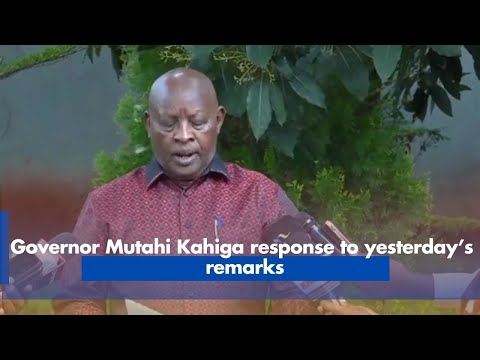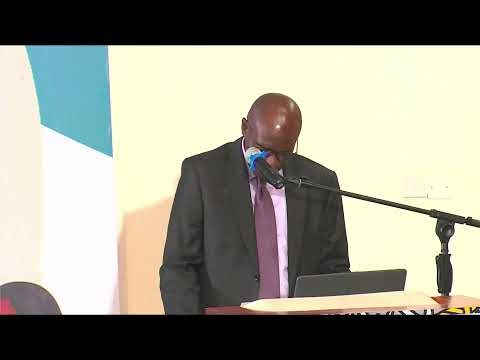Infrastructure is crucially important to foster countries' economic development and prosperity. Investment in infrastructure contributes to higher productivity and growth, facilitates trade and connectivity, and promotes economic inclusion.
The availability of quality infrastructure guarantees increase in production and productivity. Infrastructure ensures easy movement of goods and raw materials, thereby, reducing inefficiencies and leading to efficient utilisation of scarce resources and eliminating wastages.
On the social development front, infrastructure connects communities and countries with market, health and education facilities, gives access to clean water, sanitation and power, and improves livelihoods and generates employment, creating the conditions for lasting peace.
When President Uhuru Kenyatta took over the reins of power in 2013, he was acutely aware of the crucial role infrastructure would play in the country’s growth trajectory and in cementing his legacy.
His Big 4 agenda development blueprint comprising food security; affordable housing; manufacturing and universal health coverage could not be achieved without adequate investment in infrastructure. It is for this reason that the President embarked on an ambitious infrastructure development programme that has seen the country achieve massive development in 10 years.
The transport sector, no doubt, has taken a huge chunk of investment, notably in the standard gauge railway, a modern, efficient transport system that has enabled safe, comfortable travel for individuals and freight across the country and region at lower costs.
The most immediate impact of SGR, operated by Afristar, includes reliable and high capacity transport, reduced freight tariff, and decongested roads leading to savings in road maintenance, decongested port, skills transfer and an increase in employment opportunities directly and indirectly through industries that are coming up along the railway line development. The SGR has already put Kenya on the path to industrialisation, especially in manufacturing and value addition.
One of the key infrastructure landmarks benefitting from the SGR is the Port of Mombasa, where the construction of a second container terminal has seen the container throughput rise from 894,000 to 1.1 million Twenty-Foot Equivalent Units. This makes it the fifth busiest port in Africa.
The new container terminal is capable of handling fourth generation vessels of 6,000 TEU capacity. This has improved cargo and container throughput by 4,425 tonnes and 206,000 TEUs respectively. In this regard, an ultra-modern inland container depot was opened with more berths to follow.
Given that the port facilitates more than 90 per cent of our international sea trade, it is imperative that the turnaround time for cargo to leave the port and reach its destination is reduced. In this respect, the expansion of the port would not have been possible without the SGR, whose regulator Kenya Railways Corporation, has stepped up measures that have greatly decongested the port.
The President also recently commissioned the Lamu Port-Southern Sudan-Ethiopia Transport Corridor, which is no doubt one of the region’s greatest infrastructure projects. Covering approximately 1,000 acres, the mega project incorporates the port, an international airport, a highway and SGR line, connecting Lamu to Southern Sudan and Ethiopia; an oil refinery, a resort city and optical fibre.
The port, expected to be less congested than Mombasa, will provide South Sudan with its shortest link to the sea and an alternative exit point for the country’s extensive crude oil and mineral deposits.
Also worth noting is investment in the road network, which has been scaled up to build more highways, and urban roads, and to extend rural roads to where they are needed to open up areas to economic activity, trade and commerce.
The highlight though is the Nairobi Expressway, which is nearing completion. Once completed, the four-lane dual carriageway will run over 27km, linking Mlolongo town in Machakos county and Jomo Kenyatta International Airport to the Nairobi Nakuru highway.
The expressway is part of the northern corridor that provides passage to 85 per cent of the cargo destined for neighbouring landlocked countries, such as Uganda, Rwanda, the Democratic Republic of Congo and South Sudan.
As far as housing is concerned, Kenya’s Affordable Housing Programme was launched in December 2017 as one of the national government’s four pillars of growth, in the President’s Big 4 plan.
The AHP promises to deliver 500,000 affordable homes over five years, and involves several incentives and supports to enable the delivery of affordable housing. This is expected to be implemented on 7,000 acres in five cities, namely Nairobi, Mombasa, Kisumu, Nakuru and Eldoret.
Due to the rapidly changing global technological development, the government has laid down over 6,000 km of the National Fibre Optic Backbone Infrastructure across all the 47 counties to provide robust infrastructure to citizens.
Kenya has joined the Smart Africa Initiative Alliance that will leverage technology to create a single digital market in the continent. The Initiative currently covers 24 countries, with a population of 600 million.
The government has also initiated the Presidential Digital Talent Programme, which provides one-year paid internship opportunities to ICT and engineering graduates to develop skilled human capital to support ICT innovation capacity.
It is evident from the foregoing that the role of infrastructure in socioeconomic development cannot be overstated. Due to the huge investments in the infrastructure projects by President Kenyatta’s government, Kenya’s economy from 2015 to 2019 achieved broad-based growth averaging 4.7 per cent per year, significantly reducing poverty.
Since 2014, Kenya has been ranked as a lower middle-income country because its per capita GDP crossed a World Bank threshold. With a GDP of $95 billion, Kenya has successfully established a diverse and dynamic economy.
One can only hope that President Kenyatta’s successor will carry on with his legacy projects to spur more economic growth.
Managing director, Kenya Railways Corporation
“WATCH: The latest videos from the Star”










